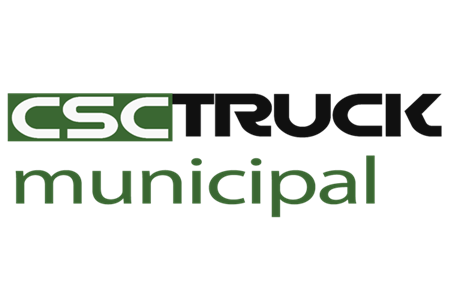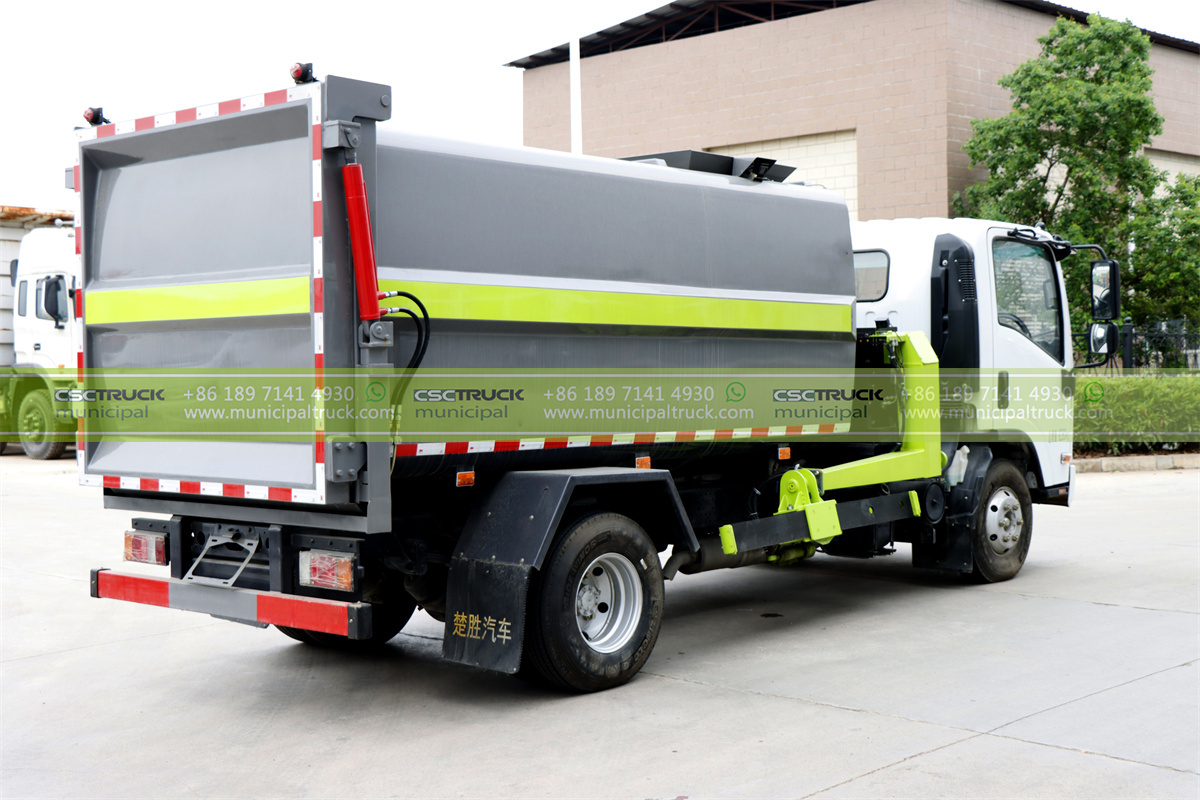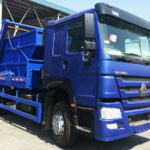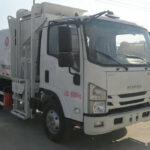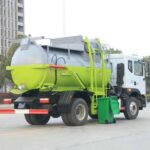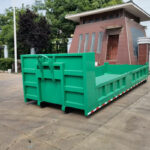Imagine the daily choreography of a bustling shopping mall at closing: mountains of cardboard, overflowing food court bins, and retail packaging cascading onto loading docks. Now, picture this waste stream multiplied across distribution centers, manufacturing plants, and hospitality hubs. For managers of high-volume commercial sites, traditional waste collection isn’t just an operational headache—it’s a costly, inefficient, and increasingly hazardous bottleneck. Enter the transformative technology of self-tipping garbage trucks: a solution engineered not for incremental improvement, but for fundamental reinvention of commercial waste logistics. These vehicles are rapidly shifting from luxury to essential infrastructure, driven by labor realities, economic pressures, and the relentless demand for operational fluidity.
The Commercial Waste Crisis: Scale, Speed, and Scarcity
High-volume commercial sites generate waste streams dwarfing residential collection by orders of magnitude. A single big-box retailer can produce tons of cardboard nightly; a food processing plant generates pallets of organic waste hourly; a stadium evacuates dumpsters of concessions debris in minutes post-event. Traditional collection relies heavily on:
- Labor-Intensive Manual Handling: Workers physically maneuvering heavy bins, connecting cables, or guiding lift arms.
- Extended Dock Occupancy: Collection vehicles blocking critical loading zones during lengthy bin exchanges.
- Inconsistent Throughput: Human limitations capping the number of bins serviced per hour.
These inefficiencies collide with three critical modern challenges:
- Chronic Labor Shortages: Finding and retaining waste collection crews is increasingly difficult. Physically demanding roles face high turnover.
- Operational Downtime Costs: Every minute a waste truck occupies a commercial dock stalls receiving, shipping, or customer access—impacting revenue.
- Safety & Liability Exposure: Manual bin handling is a leading cause of musculoskeletal injuries (strains, sprains, crush incidents) and worker’s compensation claims.
Self-tipping technology eliminates these friction points by automating the core interface between bin and truck.
Engineering Autonomy: How Self-Tipping Systems Redefine Collection
Self-tipping mechanisms (STMs) integrate robotic autonomy into waste handling. Key configurations dominate commercial applications:
1. Robotic Arm Integration (Front Loader Systems)
Core Mechanism: An articulating robotic arm, equipped with advanced sensors (LiDAR, cameras), mounted beside the cab.
Operation: The driver positions the truck near a standardized dumpster (typically 2-8 cubic yards). Using a control panel or in-cab interface, the operator triggers the arm. It autonomously:
Identifies bin position/orientation via machine vision.
Grips standardized lugs or bin edges.
Lifts, pivots, and inverts the bin over the hopper.
Returns the bin precisely to its origin.
Time Savings: Completes a dump cycle in under 30 seconds, versus 2-5+ minutes for manual hook-up and hoisting.
2. Self-Tipping Roll-Off Containers (Hook Loader Systems)
Core Mechanism: Specialized containers with integrated tipping mechanisms, paired with professional hook loader garbage trucks.
Operation:
The hook loader truck positions itself and engages the container’s locking points.
The container is winched onto the truck bed.
Once secured, hydraulic rams or pivots within the container itself activate, lifting the front to eject the load into the truck’s compaction body.
Advantage: Eliminates the need for separate lifting equipment or manual unloading at transfer stations. Ideal for construction debris, large-scale retail waste, or industrial byproducts.
Both systems leverage programmable logic controllers (PLCs) and hydraulic precision to execute flawless, repeatable cycles with minimal human intervention.
The Essential Edge: Why High-Volume Sites Can’t Operate Without Them
1. Unmatched Operational Efficiency & Density
Radically Reduced Collection Times: Servicing 50+ bins per hour becomes feasible, versus 15-20 with manual systems. This allows fewer trucks to manage larger territories or service more customers within tight operating windows (e.g., between 3 AM mall deliveries and 7 AM store openings).
Continuous Flow Operations: Trucks minimize dock occupancy. A self-tipping arm can grab bins positioned behind others or slightly offset, requiring less precise initial truck positioning than traditional front loaders.
Optimized Routing: Faster stops enable denser route planning, reducing deadhead miles and fuel consumption.
2. Transforming Labor Economics & Safety
Reduced Crew Dependency: Operates efficiently with a single driver (1-person crew), eliminating the need for a "runner" to handle bins. This directly counters labor shortages and slashes payroll overhead.
Ergonomic Revolution: Removes the most injury-prone tasks – lifting, pulling, guiding heavy bins on uneven surfaces. Dramatically lowers incident rates for strains, sprains, slips/falls, and crush injuries.
Enhanced Driver Focus: The operator remains safely in the cab, monitoring the automation process via cameras and sensors, improving situational awareness compared to manual operations where attention is divided.
3. Economic Viability & Total Cost of Ownership (TCO)
Labor Cost Dominance: With labor comprising 60-70% of waste collection costs, reducing crew size delivers immediate, substantial ROI. Savings often offset the higher capital cost of STMs within 2-3 years.
Asset Utilization Gains: Faster cycles mean the same truck services more customers/day, maximizing fleet ROI.
Reduced Damage & Liability: Automated handling minimizes bin damage (collisions, drops) and associated replacement costs. Lower injury rates slash insurance premiums and worker’s comp claims.
Waste Stream Optimization: Integration with advanced compactor garbage truck bodies allows for higher compaction ratios during the automated dump cycle, increasing payload per trip and reducing total hauls required.
4. Sustainability & Compliance Leverage
Emissions Reduction: Fewer truck trips and reduced idling time (no waiting for manual bin hook-up) lower fleet carbon footprint and fuel consumption.
Improved Capture Rates: Efficient, reliable collection reduces overflow incidents and illegal dumping risks.
Data-Driven Management: Modern STMs integrate telematics, recording bin weights, collection times, and service completion. This data streamlines billing, optimizes routing, and provides auditable compliance records for waste diversion mandates.
Beyond the Bin: Integration and Implementation Considerations
Adopting self-tipping isn’t merely buying a new truck; it’s implementing a system:
- Container Standardization: Requires compatible bins (standard lug types, structural integrity for robotic grip) or specialized self-tipping roll-off containers.
- Site Infrastructure: Loading zones need adequate space for truck approach/arm swing and stable, level footing for bins.
- Fleet Mix Strategy: STMs excel in high-density routes with standardized containers. Lower-volume stops may still need traditional rear loaders or grapple trucks – a hybrid fleet is often optimal.
- Training & Change Management: Drivers transition from manual operators to system managers, requiring training on automation controls, diagnostics, and safety protocols. Site staff need education on proper bin placement.
- Maintenance Sophistication: Robotic arms and integrated hydraulics demand specialized technicians and proactive maintenance schedules, though reliability is high in modern designs.
The Future-Proofed Fleet: Platforms Engineered for Autonomy
The demanding duty cycle and complex integration of self-tipping systems necessitate chassis and bodies built for endurance, precision, and technological synergy. Standard compactor garbage truck bodies evolve to feature reinforced hoppers and optimized compaction rams synchronized with the swift dumping rhythm of robotic arms. Professional hook loader garbage truck platforms gain sophistication with faster cycle times and integrated container telemetry.
Leading this engineered integration is the CSCTRUCK Municipal platform. Designed explicitly for the rigors of urban and commercial waste, its robust chassis handles the substantial weight and dynamic forces of automated arms and self-tipping containers. The Municipal’s advanced hydraulic architecture delivers the precise flow and responsiveness essential for smooth, rapid automated cycles, while its reinforced frame withstands the constant stress of heavy lifting and compaction. Intelligent CAN bus systems provide the necessary electronic backbone for seamless communication between the vehicle’s core systems, the robotic arm’s PLCs, weight sensors, and fleet telematics. CSCTRUCK Municipal configurations prioritize driver ergonomics, placing intuitive controls and multi-camera monitoring systems within easy reach, turning the cab into an efficient command center. For waste managers navigating the trifecta of labor scarcity, operational intensity, and sustainability mandates, pairing self-tipping technology with a purpose-engineered platform like the CSCTRUCK Municipal isn’t just a tactical upgrade—it’s the foundational architecture for resilient, efficient, and competitive commercial waste management in an increasingly demanding landscape. The quiet hum of a hydraulic arm executing a flawless dump cycle signifies more than automation; it signals the arrival of waste collection capable of meeting the relentless pace of modern commerce.
